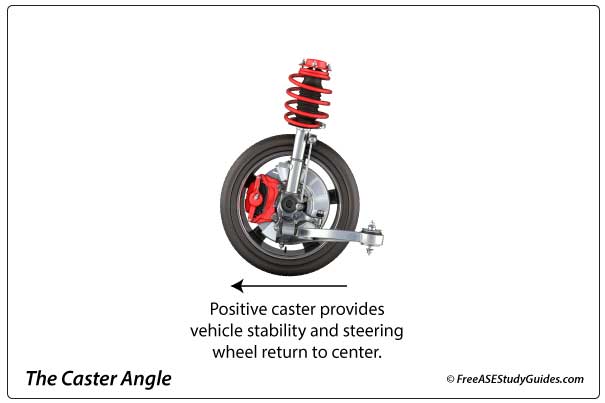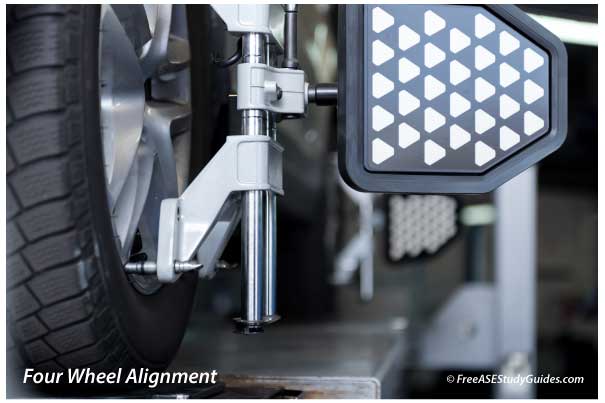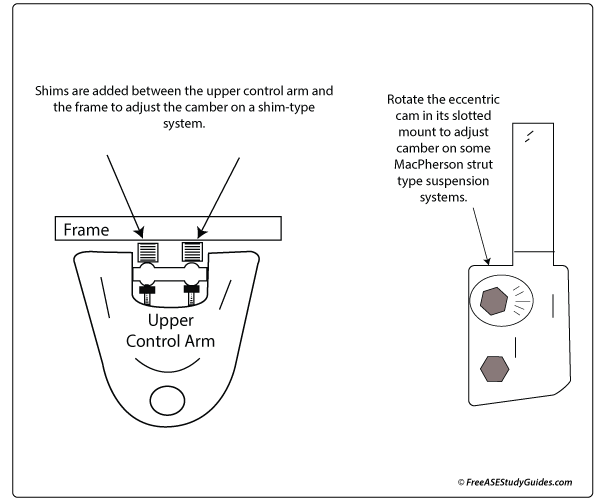Caster and Camber Angles

The camber angle, viewed from the front of the vehicle, is the angle or tilt of the tire toward or away from the vehicle's center. A vehicle's camber affects tire wear and stability. The camber angle is measured and displayed in degrees. A zero-camber setting is best for going in a straight line. A negative camber angle will result in tire wear on the inside of the tire. Positive camber results in tire wear on the outside tread of the tire. A vehicle will pull to the side with the most positive camber while driving forward.
The Caster Angle

Caster is viewed from the side of the vehicle. It's the forward or rearward tilt of the steering axis. Positive caster provides steering wheel returnability and greater stability. Negative caster is rare and typically used on heavy-duty applications.
The Camber Angle

Camber affects the vehicle's stability. There are several different methods to adjust the camber. It all depends on the type of vehicle and the steering and suspension system design. Front-wheel drive vehicles typically use a rack and pinion gear. There is no camber adjustment on most of these vehicles.
Camber Adjustments

Aftermarket products are installed if a rare camber adjustment is necessary. Some vehicles utilize an upper strut mount with slots to adjust the camber accordingly. Others use an eccentric bolt and cam that, when rotated, moves the top of the tire inward and outward, adjusting the camber angle. Adjusting the camber angle on a vehicle affects the total toe. Check and adjust the toe after adjusting the camber or caster angle.